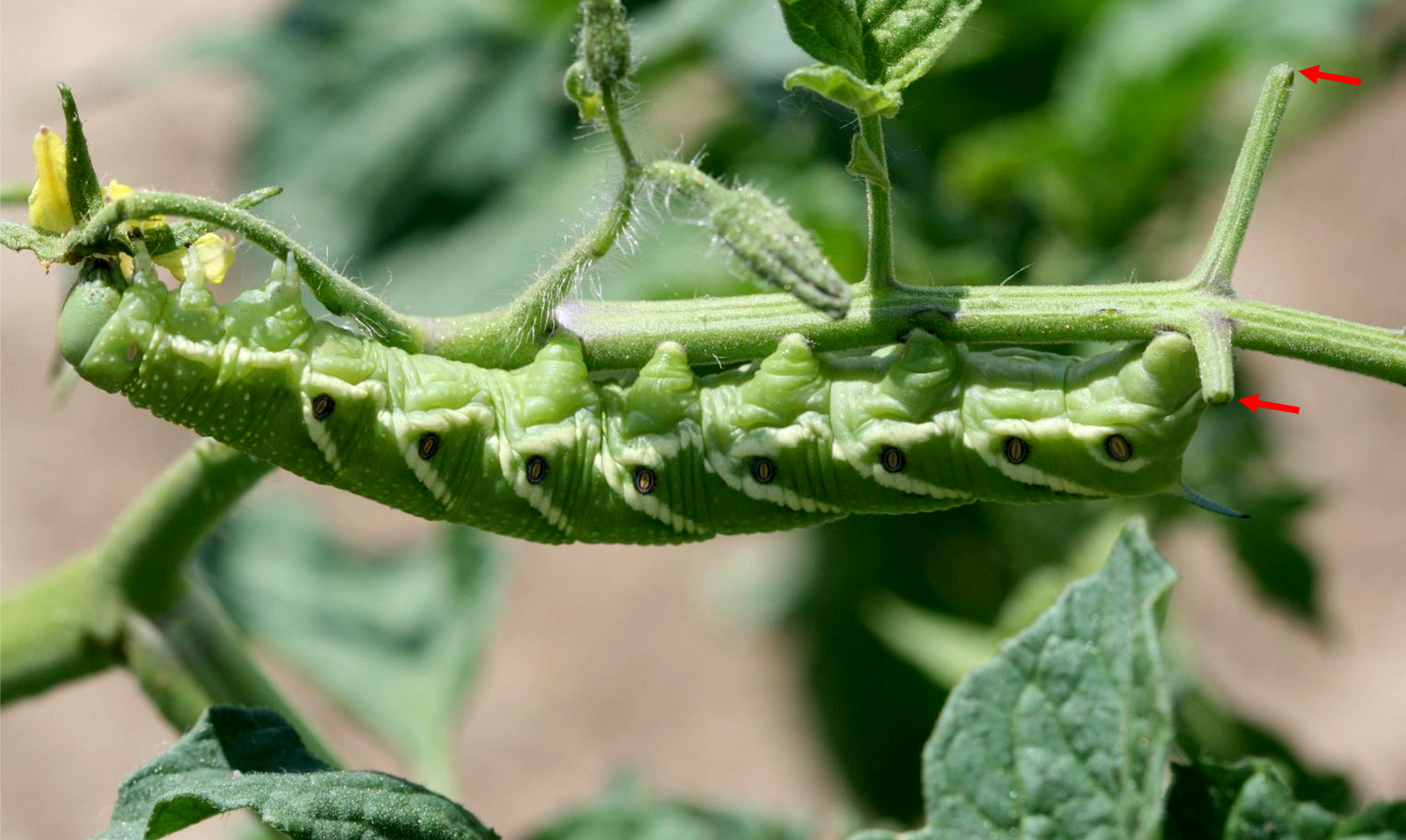Caterpillars horn in on tomato plants

COLUMBIA, Mo. — Several types of caterpillars damage tomato plants in Missouri, but the tomato hornworm and the tobacco hornworm usually get the most attention because of the prominent horn on the last segment of their bodies.
These insects are big, green, and hungry, says University of Missouri Extension horticulturist Michele Warmund. Measuring up to 4 inches, these munching marvels devour tomato plant leaves and strip them bare if unchecked. Hornworms chew holes in green tomato fruit as well, especially during dry weather. They also chomp on eggplant, pepper, potato and some weeds, such as horsenettle, jimsonweed and nightshade.
Usually, two generations of hornworms develop each summer. The adult moths emerge in mid-to-late spring. Moths of both species are mottled gray-brown with wingspans of 4-5 inches. After mating, females lay their small eggs —which often go unseen — on leaves of tomato and other host plants, says Warmund.
After hatching, tomato hornworms undergo five larval or instar stages in three to four weeks. All five instars feed on plants. The first small instar is whitish-yellow with five pairs of prolegs used to grip onto plant stems and leaves. When fully grown, caterpillars are usually green, but dark brown types can also develop.
Full-grown tomato hornworm caterpillars have V-shaped markings on their sides and a black posterior horn. In contrast, late-instar tobacco hornworm caterpillars have seven diagonal stripes on their body and their horn is usually red. Full-grown caterpillars of the second generation, which develop in mid-to-late summer, drop off plants to pupate. Pupae overwinter about 5-6 inches below the soil surface.
To limit hornworm damage, scout often for signs of feeding, says Warmund. Hornworm caterpillars blend in with the foliage, so they often go undetected until damage is severe. Feeding damage generally begins on the upper leaves of tomato plants. The caterpillars often leave dark greenish-black droppings on the foliage. Under rapid-drying conditions, spray plants with water to disturb the caterpillars, which makes them easier to spot.
Hand-pick hornworms from plants and drown them in soapy water. However, first check to see if small predatory wasps have parasitized the hornworms. Wasp larvae feed on the internal organs and fluids of hornworms. Fully developed wasp larvae form cocoons that look like grains of white rice attached to the hornworm. After killing the hornworm, wasps move to other hornworms to parasitize them. Leave parasitized hornworms on the plant to increase the number of these beneficial wasps, which are harmless to humans.
On very young caterpillars, use low-risk pesticides with active ingredients such as Bacillus thuringiensis (Bt) or spinosad. You can also use insecticidal soap to control small caterpillars, but the spray must contact the hornworm to be effective. Carbaryl (sold under the trade name Sevin) and other broad-spectrum insecticides are also available to control hornworms. To reduce future infestations, till the soil to depth of 6 inches in the fall after harvest to destroy burrowing caterpillars and pupae.
Miss Clipping Out Stories to Save for Later?
Click the Purchase Story button below to order a print of this story. We will print it for you on matte photo paper to keep forever.

